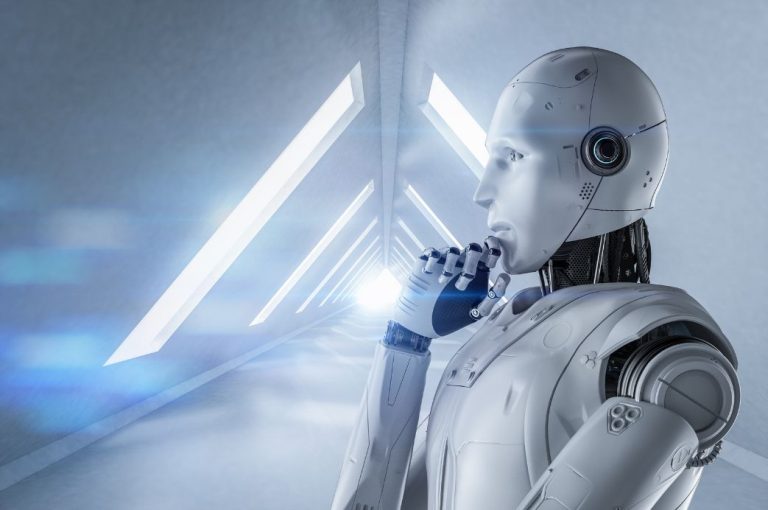Artificial intelligence will replace humans?This is one of the most repeated questions of recent years, especially after the arrival of generative AIs, such as ChatGPT and Gemini, and the customer service segment is naturally at the center of this discussion. According to the “Map of the Brazilian Bots”, produced in 2023 by Mobile Time in partnership with Opinion Box from interviews with 83 chatbot developers, the number of robots developed for customer service increased 84 times between 2017 (first edition of the report) and last year.
According to the survey, the companies reported that seven years ago they had produced about 8 thousand “bots”, a number that has exponentially evolved to 671 thousand in 2023, a growth of 8.287%. The biggest jump was between 2022 and 2023, when the number of tools rose from 317 thousand to 671 thousand.
“Esse jump clearly is related to the arrival of generative AIs. ChatGPT came to life at the end of 2022 and since then, as the study proves, the number of bots has more than doubled. But, in addition to the launches of OpenAI, Google Cloud AI, Microsoft AI or Anthropic, there have also been several evolutions in the segment, such as the democratization of platforms in low code and code environment, which basically allow the company itself to customize chatbots within a friendly system for those who do not understand programming and low cost of deployment. With this, even small and medium-sized companies have access to artificial intelligence, Rodrigo and intelligent systems.
The platform in recent years has helped large companies such as Claro Brasil and Bradesco Cards to make their service processes smarter and more strategic. With the card operator, for example, applying multichannel technology with intelligent distribution of services and SLA’s control, cVortex helped reduce by 53% complaints that were over the deadline, in addition to bringing an economy of R$ 15 million for the company's SAC operation in the first year alone.
However, says Garcia, despite all the evolution that chatbots have gone through, it is not yet time to leave human service behind. “O consumer still prefers human service when demand has greater complexity and today this is the biggest challenge within companies, reconcile the two service models intelligently and strategically, aiming to achieve the best possible performance for operations, combining efficiency with the good experience of its users and customers”, he explains.
Partnership between humans and robots
According to a study conducted by Hibou in October 2023 with more than two thousand people throughout Brazil, 86% were dissatisfied with the service of companies in general. According to the document, for 94% of people, what makes a service “good” is to have agility, while 91% want to have the option of having human support, if necessary. The research brings even other interesting insights:
- 66% said it is important to maintain a humanized and constant relationship;
- 52% want a simple website where they can do all the processes online;
- 47% believe that businesses need to be consistent across all physical and digital channels;
- And for 35%, SACs need to have the service history on hand when speaking to the customer.
But in an increasingly digital world, where a company counts at the same time with a page on Instagram, Facebook, chatbot on the site and telephone service channel, how to serve well and consistently without needing an army of people monitoring everything all the time? “This is where the technology” comes in, explains Garcia.
According to the executive, the use of a digital platform omnichannel (multichannel), combined with artificial intelligence solutions, already helps to solve much of the demands of consumers. “O system acts as a central 24 hours, which monitors, organizes, identifies and forwards the demands of customers according to their business classification, customer segment and complexity hierarchy.In the case of a medical clinic, for example, the same client may have asked through the Instagram chat if there was availability of a particular specialty, then contacted by WhatsApp to make appointment and, subsequently, a question arises about the medical prescription.The three interactions have different levels of complexity.The first two can already be easily met with a medical attention and doubt by the need for a person, by the artificial intelligence, by the person, by the person, by the need of the person, by the person, by the person, by the person, by the person, by the person, by the person, by the person, by the person, by the person, by the person, by the person, by the person, by the person, by the person, by the person, by the person, by the person, by the person, by the person, by the person, by the person, by the person, by the person, by the person, by the person, by the person, by the person, by the person, by the person, by the person, by the person, by the person, by the person, by the
According to the executive, by identifying this need, the system puts the customer in contact with a human attendant, who has at his disposal on the platform a record with all the data and complete history of the interactions already carried out by this customer, including messages sent by social media, WhatsApp and even recordings of telephone conversations already made, dispensing unnecessary questions for data confirmation or that the customer needs to repeat his request.
“In addition to the agent gaining enough agility, users (customers) also experience another level of relationship. From the historical data of calls, in addition to all interactions with the central, the omnichannel platform united the AI can generate insigths, make predictions or simply identify deviations and/or opportunities in the relationship between companies and their customers. This generates a feeling of attention, welcome and deep understanding of the need of customers, significantly increasing the potential loyalty”, explains Rodrigo.
Another advantage of having a system omnichannel intelligent, highlights the head of business of cVortex, is the reduction of operating costs for the SAC of companies. “Ao forward the most effective means of service for each type demand, our customers could scale their teams and physical centers of service to the size they really need to have, starting to count on more compact teams, but with specialized and qualified professionals. Therefore we believe that, in the current scenario, the companies that will offer the best service to their customers, will be those who opt for the strategy that has AI and people working together, with well-defined and planned business processes,”, concludes the executive.











